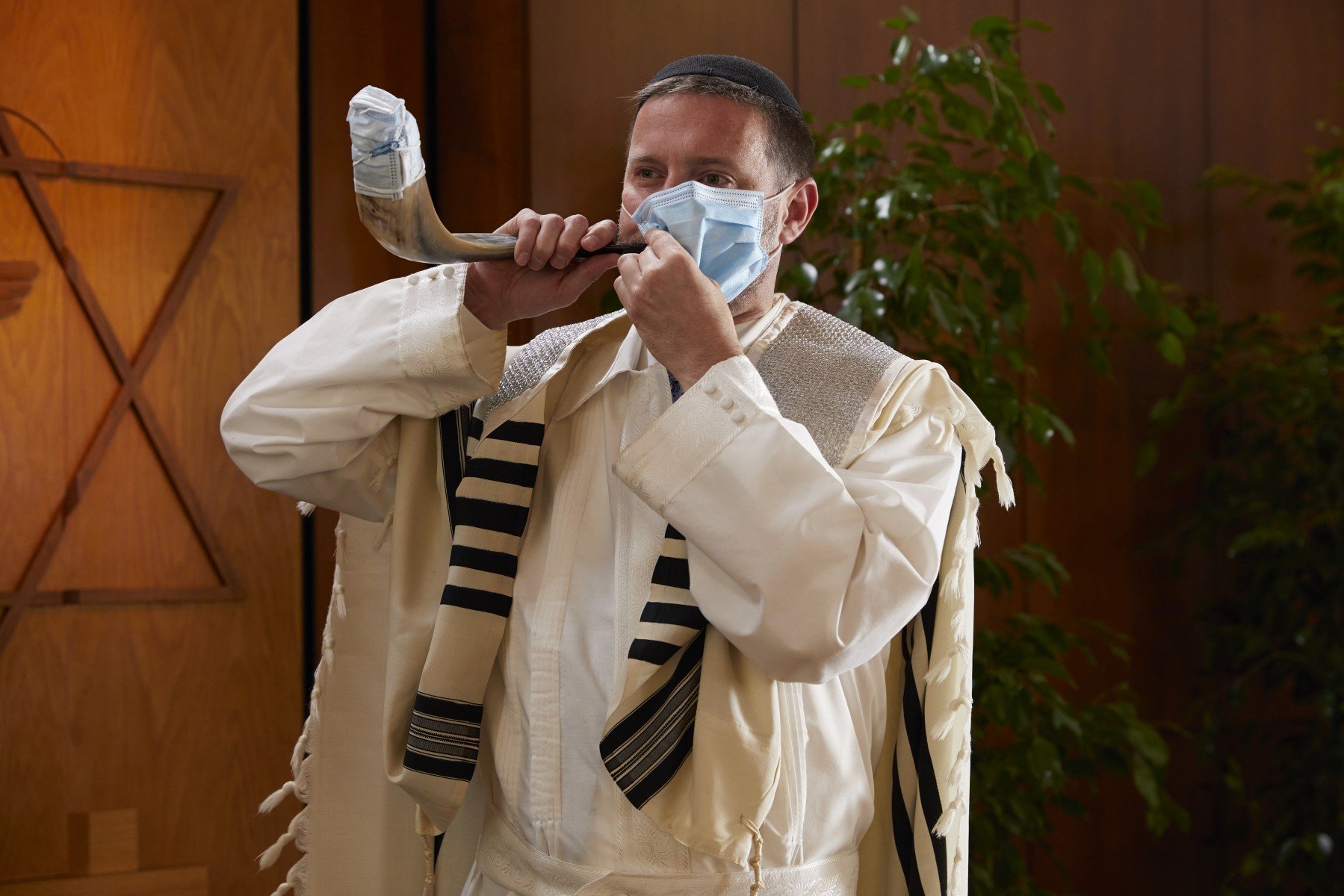This Rosh Hashanah, even the shofar will be wearing a mask.
That is just one of the unconventional ways that the COVID-19 (coronavirus) pandemic is changing the way Rabbi Jason Weiner, PhD, and his team of chaplains at Cedars-Sinai will be bringing this year’s Jewish High Holidays to Cedars-Sinai patients.
“COVID-19 has changed the way we work, and the High Holidays are no exception,” said Weiner, senior rabbi and director of the Spiritual Care department. “We’ve had to get creative about how we bring these rituals to our patients.”
These holidays–Rosh Hashanah marks the Jewish new year, and Yom Kippur is the Day of Atonement–represent a time of spiritual renewal. They’re traditionally observed at Cedars-Sinai with services in Harvey Morse Auditorium, the hospital’s largest event space. Packed with patients, their families and Cedars-Sinai staff, the auditorium is often filled to capacity, with overflow seating spilling into nearby conference rooms, and the service is broadcast in the rooms of patients who are unable to attend in person.
“This year, that obviously wasn’t possible,” Weiner said.
Instead, he and his team of chaplains have produced interactive video services that patients will be able to watch and follow along with independently from their own rooms.
“The service follows along with our own prayer book used during the High Holidays,” Weiner said. “But instead of giving one single sermon, we focused on giving context around each of the prayers and rituals of the service, to make the prayers more meaningful, and so we can use this video in future years.”
For example, during the Torah reading, Weiner talks about how the passages relate to the idea of never giving up, even when things look very bleak.
Perhaps the biggest change this year centers on the shofar, a traditional object made from a ram’s horn that Jews are biblically commanded to hear during the holidays. In past years, a troop of volunteers took turns visiting patients and blowing the shofar.
“This year, we need to limit visitors and patient contact because of the pandemic, so I’m doing it all myself, with my mask on and with the shofar’s mask on,” Weiner said.
The mask, wound around the end of the horn, will act as a barrier for droplets in the same way it works covering a person’s mouth and nose.
Blowing the shofar once is no small task – producing sound from the horn is notoriously difficult and shofar blowers often practice for months leading up to the High Holidays. Sounding it over and over again in multiple patient rooms, and with a mask on, is going to take an extra level of training.
“I’ve really had to practice and train my lungs for this,” Weiner said.
Weiner, who also heads a small congregation in the South Robertson neighborhood in Los Angeles, says that those observing the holidays outside of a hospital setting should adhere to the protocol for places of worship and Jewish High Holiday FAQ issued by Los Angeles County.
“My congregation is meeting outdoors, in the backyard of one of our members,” Weiner said.
Each congregant will be required to wear a mask and practice hand hygiene, and chairs will be spaced at least 8 feet apart. Instead of multiple members of the congregation going up to read sections from the Torah, one person will read the whole passage while the rest of the congregation remains at their seats, and the services will be shorter than normal.
“It’s going to be different, but we’re making it work,” Weiner said.
And a masked shofar will be making an appearance there too.
“The wailing sound of the shofar mimics the sound of a person crying out in grief,” Weiner said. “It’s interpreted as both a wake-up call and a reminder of the human condition – an especially relevant reminder this year that, even though we are apart, even though we are going through these difficult times, we are all in this together.”
Read more on the Cedars-Sinai blog: Healthcare Heroes: Spiritual Care
